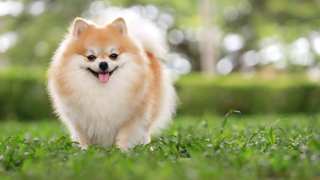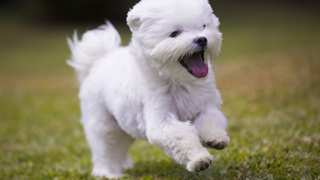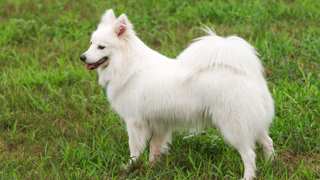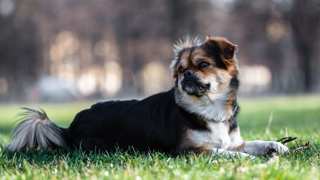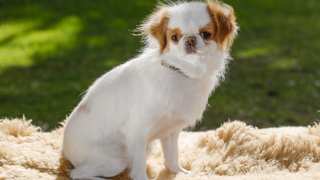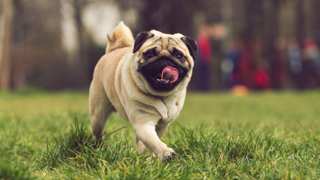Though lively and energetic, a Pekingese doesn't require a great deal of daily exercise. Since Pekes are a toy-sized breed, what would be considered just a little exercise for larger breeds is a lot for them! A Pekingese puppy can be exercised by going on short (10-minute) leashed walks as early as three months of age; an adult Peke will need about an hour of physical activity per day, ideally consisting of two moderate (15- to 20-minute) walks along with a prolonged play period.
Certain precautions need to be taken, though, when exercising a Pekingese. For one thing, this breed's temperament usually includes quite a bit of stubbornness, so it's best to use a leash when walking them (often combined with teaching them the "Heel!" command) from puppyhood on, in order to instill proper obedience. Puppies don't need to participate in activities that include lots of jumping and running, as this can damage their still-growing bones and joints. And Pekingese are brachycephalic, meaning they have short noses that don't cool the air they breathe as well as longer-nosed breeds, so they can easily overheat in extremely warm temperatures; make sure you don't exercise your Peke for very long in hot weather, and provide the dog with access to plenty of fresh water at all times.
That hour of daily exercise (particularly those leashed walks!) is crucial to a Pekingese's behavior. As previously mentioned, these dogs can be stubborn and willful, and a Pekingese that's not properly exercised can turn into a bossy, fussy, even downright mean little dog. So daily activity is key in keeping both the Peke and its human family members happy. A few exercise ideas:
- Walking: Two 20-minute walks per day is a good target
- Dog Park: Pekes love playing with other dogs
- Fetch: Can be done indoors or out
- Obedience trials: Helps a Peke learn proper behavior
- Hide and Seek: Good indoor activity on hot or rainy days
When indoors, it's a good idea for a Pekingese to have a toy to play with to release pent-up energy. (And a stick or other oblong-shaped toy is best; Pekingeses' small mouths have trouble gripping a ball of any size.) A Pekingese will also love having another toy-sized dog (especially another Peke) to play with, so multi-dog households are ideal. And it's recommended that you establish a consistent daily exercise schedule for your Peke (like walks in the morning and evening, for example, combined with a play period in the afternoon).

